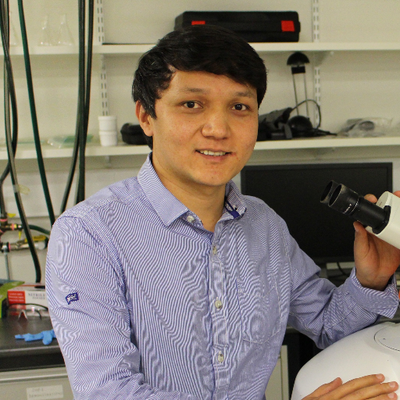Robust superhydrophobic fabrics by infusing structured polydimethylsiloxane films
Published:
Abstract: Superhydrophobic coatings have large application potential in self-cleaning textiles. Low durability, high cost of fabrication, and environmental concerns over the usage of chemicals such as fluorocarbons limit the utilization of superhydrophobic coatings. This study reports a convenient and inexpensive approach to fabricate robust and fluorine-free superhydrophobic fabrics based on the transfer of structured polymer films and hydrophobic nanoparticles. In this approach, polydimethylsiloxane (PDMS) is infused between sheets of fabric and paper, followed by curing and removal of the paper. This process results in a fabric infused with PDMS whose structure is a negative replica of the paper surface. Then, hydrophobic nanoparticles are sprayed onto the structured PDMS side of the fabric. The infusion of PDMS and subsequent deposition of the hydrophobic nanoparticles enables strong bonding, as shown by the excellent solvent stability of the superhydrophobic fabric under ultrasonication. The proposed approach is universal in that it can be applied to almost any textiles, which upon coating, exhibited superhydrophobicity with a water contact angle of 172° and a sliding angle of 3°. Furthermore, the superhydrophobic fabric showed robust durability against water spray impact and mechanical bending where it can keep superhydrophobicity for at least 200 cycles of each test.
